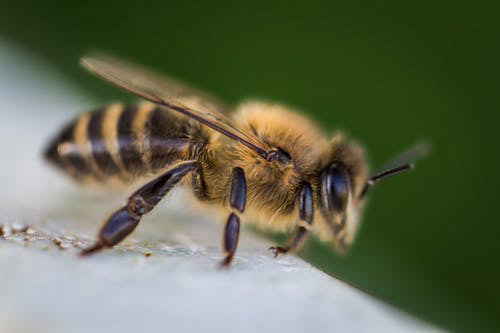2019
All you need to know about stinging pests

Stinging pests like wasps, bees, and mosquitos are not only annoying to deal with, but they also send thousands of people to emergency each year. Even if you are not allergic to their stings, they can still cause a reaction that can range from mild irritation to swelling and fever. Wasp and bee nests can become a severe problem if it is not dealt with quickly. Here is a guide to stinging insects and what you should do if they invade your property.
BALD-FACED HORNET
Called such because of the white markings on the upper front of their body, face, and abdomen. They are a blue-black colour and around 3/4 of an inch long. Bald-faced hornets’ nests are a teardrop shape and can be up to three feet long. You will likely find these enclosed, paper nests hanging from trees, bushes, or the side of a building. Bald-faced hornets help control the population of several insects. They become aggressive and dangerous when their nest is disturbed, so it is best to leave removal to professionals.
BUMBLEBEES
This type of bee is quite large at about an inch long, with fur-covered yellow and black striped bodies. They help pollinate plants and crops. Bumblebees typically build their nests in secluded places like a burrow or near the ground. You can reduce the chances of their presence by removing materials they could use for a nest and inspecting areas they might build in. They do sting though, so it is best not to remove them yourself.
CARPENTER BEES
These insects look similar to bumblebees but have yellow hair only on the upper front of their body, and have a blue-black, green, or purple shiny, metallic abdomen. They are about an inch look and can usually be found near wood structures. They like to bore in wood, so staining or painting wood can help deter them. They are hard to detect and exterminate entirely because of their hidden habitat, so it is best to call pest control if you see carpenter bees.
EUROPEAN PAPER WASP
Commonly found near homes, they are black, white, and yellow and about an inch long. European paper wasps build open nests from tree branches or house overhangs. They help control pest populations but if they are found near people, professionals should be called because they can rebuild their nests quickly.
YELLOW JACKETS
They look similar to hornets, with black and yellow stripes and are around 1/2 an inch to 3/4 of an inch long. Yellow jackets build nests in hollow logs, underground in burrows, or even inside of walls. Their diet consists of different insects that are considered pests, but they can build nests in and around places people typically reside.
HONEY BEES
These bees are about a half inch long and can get quite angry when bothered. They are social insects and are extremely important for crop production. Honey bees build their hives in hollow trees or along buildings. Their colonies can get quite large and removing a nest with honey can be messy. To safely remove a honey bee, contact a professional.
MOSQUITOS
These small, flying insects with narrow wings and long legs can be a nuisance during humid weather. Female mosquitoes need to ingest blood to produce eggs, which are laid in areas with water. When they feed on a mammal, they inject anticoagulants that can cause itchiness and swelling in people. The best way to reduce your chances of getting a mosquito bite is by getting rid of standing water. Look for water in rain gutters, buckets, plastic covers, toys, old tires, or other containers. Treat swimming pool water and keep it circulating so that it is not seen as a breeding ground for mosquitoes.
Because of Vancouver’s hot and humid climate, these pests are bound to lurk about. If you have trouble dealing with them, call Gilpin’s Pest Control. Our experienced exterminators will get rid of stinging insects efficiently and safely.
